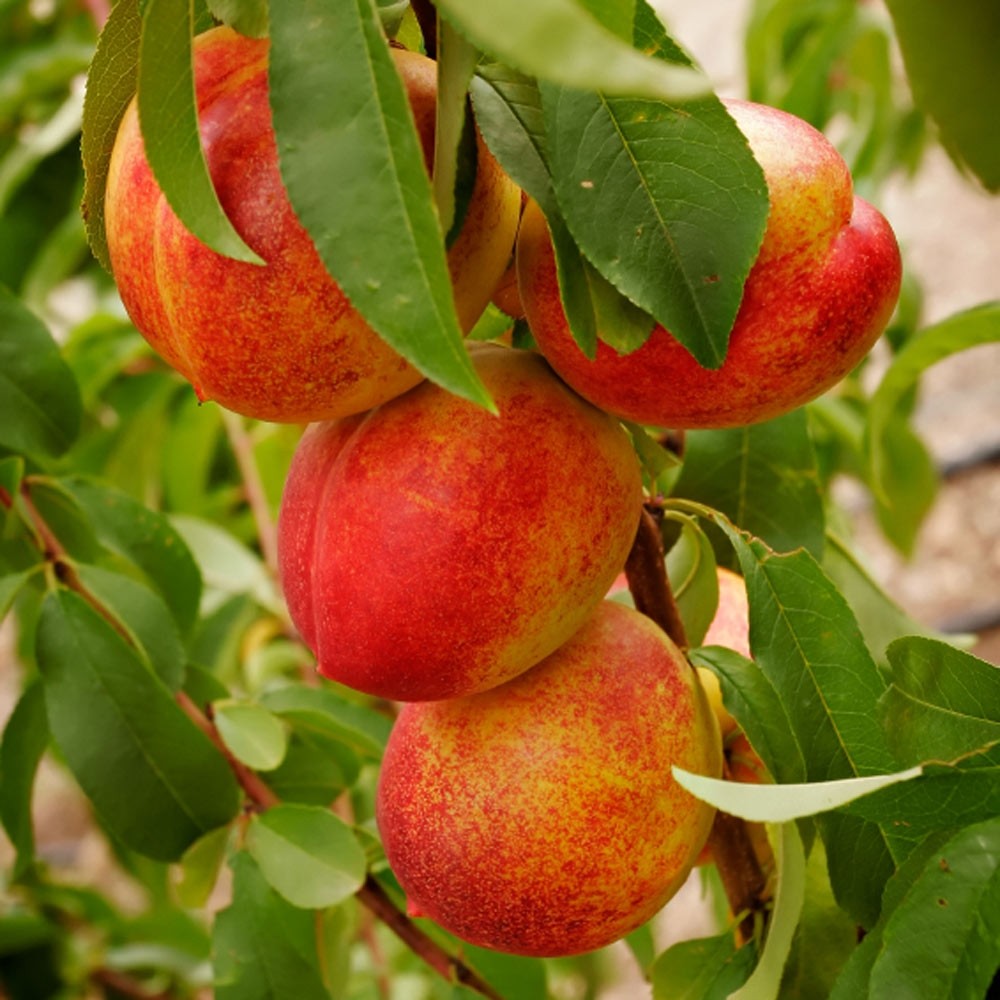
Nectarine Tree
Prunus persica var. nucipersica
Basic Information
🌿 Family: Rosaceae🗺️ Zone: 5-9
Other Names:
- Nectarine
🌡️ Ideal Temperature : 65°F – 85°F
🔥 Heat Tolerance: Up to 95°F
❄️ Cold Tolerance: Down to -15°F
🌱 Type: Perennial
Layers
- Sub-Canopy
Functions
- Edible
- Pollinator
- Wildlife Attractor
- Border Plant
Pests
No pests associated with this plant.
Description
The Nectarine Tree (Prunus persica var. nucipersica) is a deciduous fruit tree producing smooth-skinned, juicy fruits similar to peaches. Typically reaching heights of 4–6 meters (13–20 feet), nectarines are prized for their sweet flavor and are consumed fresh, dried, or used in cooking and baking.
🌞💧 Sun and Water Requirements:
- Requires full sun exposure to ensure healthy growth and fruit development.
- Prefers well-drained, loamy soils with a slightly acidic to neutral pH (6.0–7.0).
- Needs regular watering, especially during dry periods, to maintain soil moisture without waterlogging.
✂️🫘 Methods to Propagate:
- Grafting: Common method to propagate specific cultivars, ensuring fruit quality and disease resistance.
- Seeds: Can be grown from seeds, but the resulting trees may not produce true-to-type fruit and can take longer to bear.
🧑🌾👩🌾 When to Harvest:
- Fruits typically ripen in late spring to summer, depending on the variety and climate.
- Harvest when the fruit develops full color and yields slightly to gentle pressure.
- Handle with care to avoid bruising, and consume or process shortly after harvesting for best flavor and quality.
Purpose
Nectarine trees offer several benefits in permaculture designs:
- Edible: Provide sweet, nutritious fruits rich in vitamins A and C, dietary fiber, and antioxidants.
- Pollinator: Blossoms attract bees and other pollinators, supporting the health of the local ecosystem.
- Wildlife Attractor: Fruits serve as a food source for birds and small mammals.
- Border Plant: Can be used to define garden boundaries or as part of a fruit tree guild.